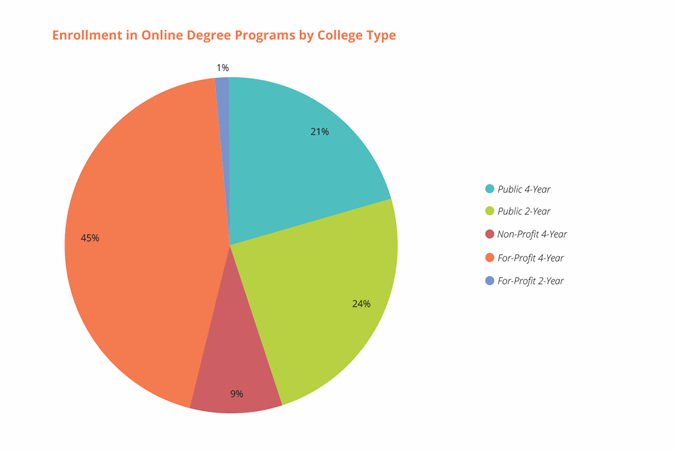Sign up for our LAVY email
and get our bi-monthly newsletter.
As lines continue to blur between “real life” and the digital world, so must the on-campus and online experiences higher education institutes of learning provide for their students.
For starters, your brand should have a consistent look and feel between physical and digital campuses. Unify the look by using the same tonality and color palette, and addressing people the same way whether they attend in person or remotely.
That doesn’t mean your online learning platform should duplicate the traditional on-campus experience. While the two should absolutely work well together, it’s more important for schools to develop alternative options so they can meet a variety of student needs.
Let’s take a look at a few real-life examples of how two Arizona universities have put these concepts into action.
The University of Arizona, home of the UArizona Wildcats, takes up a surprisingly small amount of space. The compact physical campus is situated on 392 acres in the heart of Tucson, Ariz. That, in addition to being an officially designated state arboretum blanketed with a variety of desert plants, gives the public research school a cozy atmosphere.
 When UArizona added its online component in 2012, the learning platform was built as an offshoot from its traditional programs. Within five years, Arizona Public Media reported, enrollment in the UA’s online program topped 3,600 students, a number that school leadership expects to triple by 2024.
When UArizona added its online component in 2012, the learning platform was built as an offshoot from its traditional programs. Within five years, Arizona Public Media reported, enrollment in the UA’s online program topped 3,600 students, a number that school leadership expects to triple by 2024.
No longer a novelty or a mystery, prospective online students can visit Arizona Online 101 for a sneak peek at a sample course.
The approach is working. The University of Arizona is listed among U.S. News & World Report’s 2019 Top 30 Best Online Bachelor’s Programs. And, as of early 2018 (the most current statistics available), the UA’s online learning platform included 31 programs for undergraduates with an average age of 30, demand flexibility.
Arizona State University, spread across 632 acres, can feel more like a giant city than the home of the Sun Devils. Students often use buses or light rail to attend classes across the Valley at any number of campuses including its main campus, ASU Tempe in Tempe, Ariz.; ASU West and ASU Downtown in Phoenix, Ariz.; and ASU Polytechnic in Mesa, Ariz.
Additionally, with 80,000 students who attend courses in person, ASU has one of the largest student bodies among American public universities. Some of these students supplement their traditional class schedule with an online course or two.
A significant chunk of ASU’s 30,000 online students, however, will never visit a single physical campus. They do it all online.
That’s why ASU conscientiously built its online campus with a different feel from its physical campus, with the addition of a critical component—crossover the two worlds.
ASU’s brick-and-mortar campus was built over a long period of time with input from numerous collaborators. In contrast, ASU Online was developed by a much smaller committee in a relatively short amount of time. The goal from the start was to maintain a unified message and tone between physical and digital programs, while providing a uniquely online experience for those who attend virtual classes.
“You do education well, and communicating brand and tonality we do well,” LAVIDGE representatives explained to committee members when discussing the opportunity to create their online college experience. Our goal was to bring consistency to the website, with a voice it could bring back to a physical reality. In very real ways, both campuses were strategically aligned from the beginning.
A key ingredient to consistency in messaging and brand across your virtual and physical offerings is to first identify how each fits within your overall goals. For example, when it comes to your mission is it to provide an education first, with jobs treated as a secondary benefit? Or is preparing students for their career your primary goal? You need to know where you stand on it.
Some self-reflective branding questions include:
Other considerations for your online experience include:
Some universities, including Full Sail University Online, have gone from having everyone log on at the same time for online course lectures to making archived lectures available within the course portal. Doing so made their online programs even more flexible—an important detail for a student body which highly prioritizes “anytime” availability much more than those who attend music, media and digital marketing programs in person in Winter Park, Fla.
In addition, there are other tools you can leverage such as Skype, WeChat and others. If they don’t exist, a skilled programmer can invent them.
Students who attend trade schools might also already be in the workforce. The challenge is to get them engaged or emotionally connected with your school.
They aren’t attending sporting events or participating in other activities traditionally associated with the college experience, so making them aware of the programs you do provide is key.
Begin by sharing the knowledge those things are there. Being aware that your college actually has programs to connect students can make all the difference in helping them form a bond.
Trade school students are motivated to get into their chosen field sooner rather than later. Communicate to potential students that they can get their certificate in less time than it would take to earn a traditional degree.
Make sure potential students understand the head start they will get by entering the workforce as a skilled tradesperson sooner and at a lower cost compared to earning a traditional degree. Whether they are learning to become a welder, personal trainer or pharmacy tech, map out your digital and physical digital experience so they can choose wisely.
LAVIDGE can help. We’ve worked with four-year universities, community colleges, professional certification programs for sports medicine (personal trainers) and more. We can help you too.
To learn more, give us a call at 480.998.2600 or send email to info@lavidge.com.
How does the availability of online college campuses impact the higher education student experience? It turns out that a significant portion of those seeking an online degree turn to for-profit four-year schools.
The “National Postsecondary Student Aid Study” (NPSAS) shows that students enroll in online degree programs at public colleges and private for-profit colleges at about the same rate. In addition, students who register for online programs at public colleges are within 3 percentage points of each other with two-year schools slightly ahead of four-year institutions. For-profit colleges which offer online degrees, however, tend to provide four-year programs.

More information is available from the National Center for Education Statistics .
Sign up for our LAVY email
and get our bi-monthly newsletter.